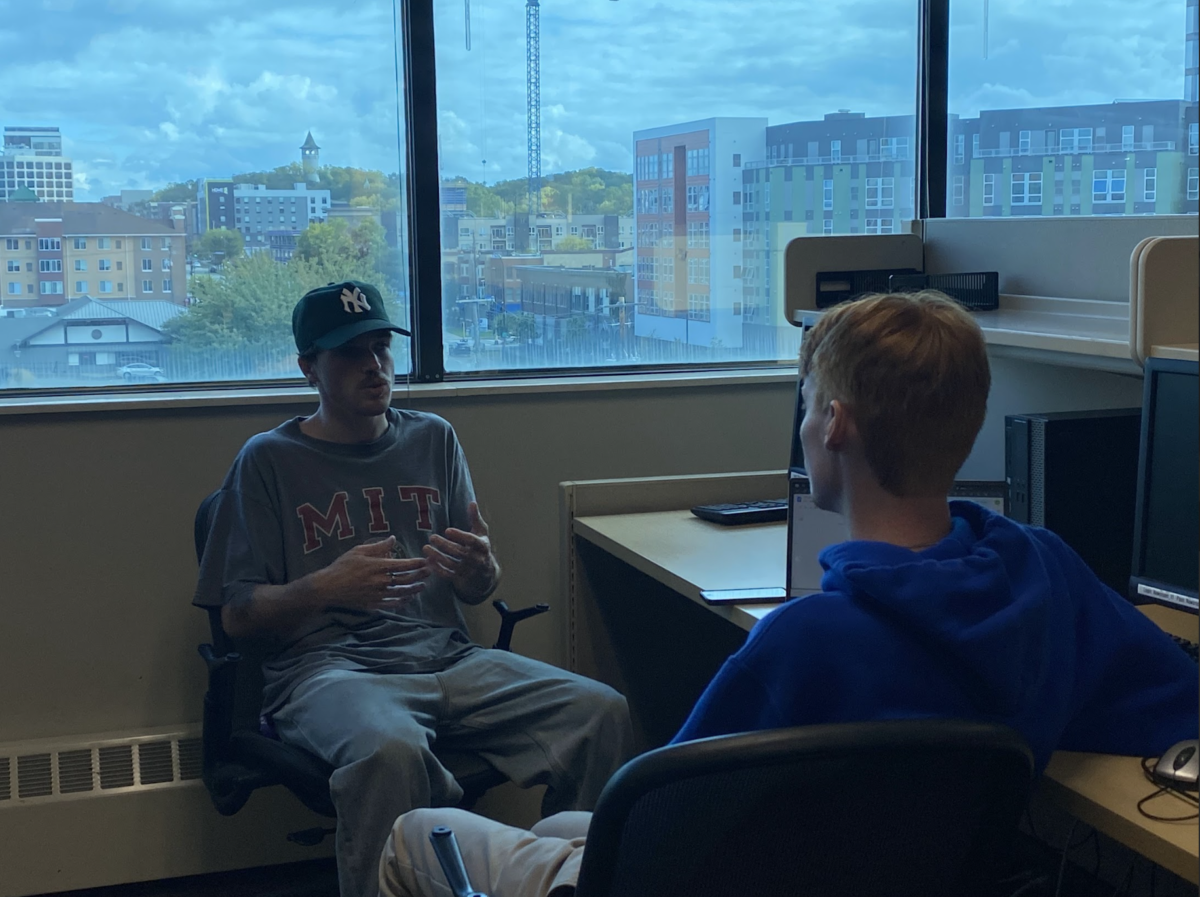
Eleanor King
Tucker Robinson discusses on Sept. 27 his experience having Narcan used on him.
Late one night after work in Oct. 2017, 22-year-old Tucker Robinson bought what he believed was a bag of heroin without realizing it contained fentanyl. After getting high in the bathroom, Robinson crawled into his cramped room, where his heart stopped.
Two minutes later, his roommate came back and saved his life with Narcan.
Robinson had been using opioids for three years. He dropped out of college twice, experienced homelessness and was paying $50 to live in a closet-sized room with a roommate who he frequently did heroin with.
Weeks earlier, Robinson was in detox where a counselor insisted he take a can of Narcan, despite his initial apprehension. It was the Narcan his roommate used on him that saved Robinson’s life.
Overdosing offered him perspective.
“I started to think a lot about my family, my younger sister, both of my parents and them having to go to my funeral,” Robinson said. “That thought, that fear, was enough to push me down the path into making an effort to get into recovery.”
Six years after overdosing, Robinson is sober and a program director for Change the Outcome (CTO), an organization dedicated to educating the public about the opioid epidemic, including resources like Narcan.
With overdoses becoming the number one cause of accidental death in the U.S., activists like Robinson are pushing to educate the public on naloxone, commonly known as Narcan, a treatment to block the effects of opioids and reverse the effects of an overdose.
Fear, stigma, drugs and Narcan
More than 100,000 people died of overdoses in 2022 in the U.S., according to the Centers for Disease Control and Prevention (CDC). About 60% of overdoses in 2021 involved fentanyl, according to the National Institute on Drug Abuse.
Hennepin County saw more overdoses in 2022 than any year ever recorded, according to the Minnesota Bureau of Criminal Apprehension, with over 900 deaths from overdoses coming from synthetic opioids like fentanyl.
As of July, in more than 1,700 overdoses where Narcan was administered in Hennepin County this year, the treatment improved people’s condition about 70% of the time.
Justin McNeal, director of Justice Involved Programs for Minnesota Recovery Connection and someone who has used Narcan to reverse an overdose, said acknowledging the opioid epidemic is needed to save lives.
“People should stop ignoring the fact that this is part of our world now because more people will just continue to die if we don’t,” McNeal said.
With common drugs, like Adderall, occasionally being cut with synthetic opioids, the chances of overdosing and death are increasingly high, according to McNeal.
Fentanyl is a synthetic opioid prescribed for treating severe pain that is 50-100 times stronger than morphine, according to the CDC. However, it is often illegally cut into other drugs to produce stronger highs.
A dose of fentanyl the size of the president’s ear on a dime can be fatal, while newer strains only need to be the size of a grain of sand to be lethal, according to McNeal. This can be especially dangerous for people who are unaware their drugs are cut.
Many people, particularly parents, do not want to acknowledge the drug epidemic at all, according to Robinson.
“It’s easier for people to deny and pretend that the problem doesn’t exist than acknowledge it and be like, ‘Our kids might be exposed to these substances,’” Robinson said.
!function(){“use strict”;window.addEventListener(“message”,(function(a){if(void 0!==a.data[“datawrapper-height”]){var e=document.querySelectorAll(“iframe”);for(var t in a.data[“datawrapper-height”])for(var r=0;r
